The Hot Shoe Diaries: Big Light from Small Flashes
£34.50£38.50 (-10%)
After spending more than thirty years behind the lens―working for National Geographic, Time, Life, andSports Illustrated―Joe McNally knows about light. He knows how to talk about it, shape it, color it, control it, and direct it. Most importantly, he knows how to create it…using small hot shoe flashes.
In The Hot Shoe Diaries, Joe brings you behind the scenes to candidly share his lighting solutions for a ton of great images. Using Nikon Speedlights, Joe lets you in on his uncensored thought process―often funny, sometimes serious, always fascinating―to demonstrate how he makes his pictures with these small flashes. Whether he’s photographing a gymnast on the Great Wall, an alligator in a swamp, or a fire truck careening through Times Square, Joe uses these flashes to create great light that makes his pictures sing.
Read more
Additional information
| Publisher | New Riders, Original edition (3 Mar. 2009) |
|---|---|
| Language | English |
| Paperback | 336 pages |
| ISBN-10 | 9780321580146 |
| ISBN-13 | 978-0321580146 |
| Dimensions | 20.32 x 1.91 x 22.86 cm |

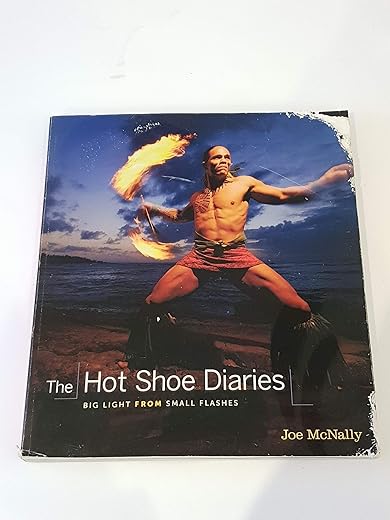

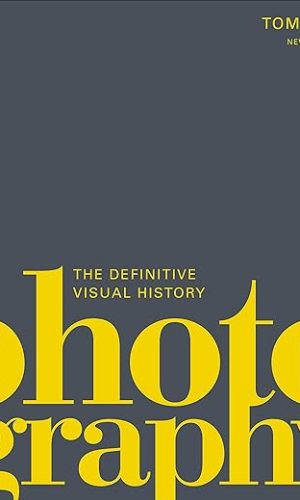
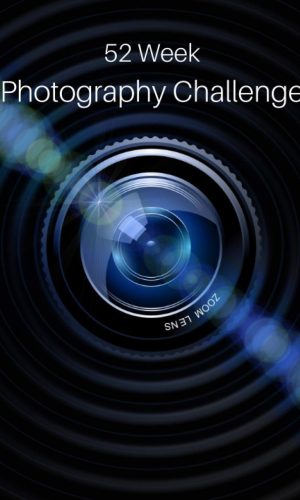
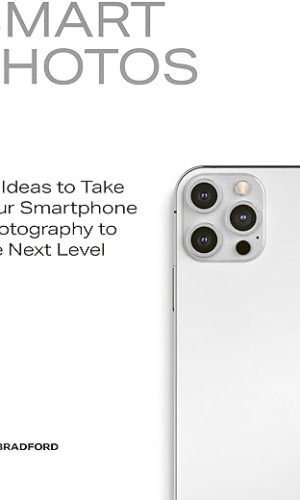
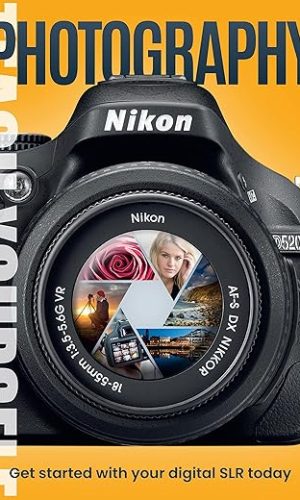
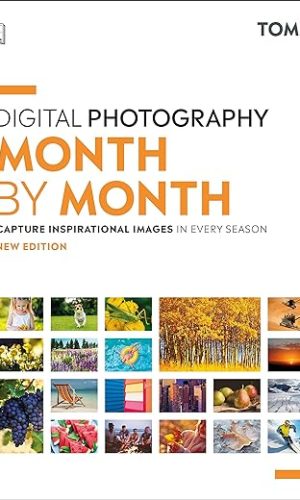

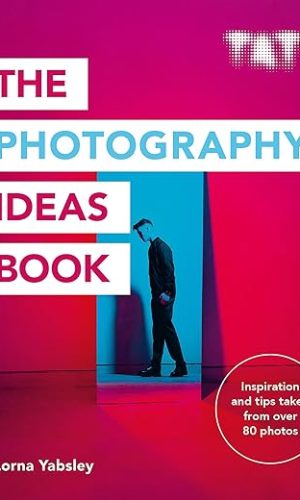

by Spuds
After reading some of the previous reviews, I do wonder what some people expected when they bought this book…it’s well known this guy exclusively uses Nikon kit, so it was always going to feature that company’s products. I use Nikon at work (as a Crime Scene Examiner) and I’ve just gone over to Canon (EOS 5D MkII) and Metz for my private stuff, so I feel I can give an unbiased opinion.
I bought the book because I wanted to know more about the capabilities of Speedlight lighting, as recent years have seen a lot more accessories available through companies like Interfit (their Strobist range). In the old days you had bulky studio kit or weedy little underpowered on-camera units. That’s all changed now.
The author’s use of American “slang” can be a bit irritating, but it’s just his writing style. He’s an American so get used to it. His pictures aren’t perfect either (whose are?) but he doesn’t say they are. It’s all a matter of taste, after all, and if his clients liked them then who are we to criticize?
Where this author excells is in his huge well of experience using this type of lighting. In many cases, it’s a case of using the kit to get a picture or not getting the picture at all, and for this you can thank the guy’s background in journalism.
I really liked the case histories for each picture, with sketches and detailed notes to show you how he achieved the results. Some are really simple. So simple in fact you’re left feeling quite inadequate, as there’s always a temptation to over-light things and lose the atmosphere in a scene.
The author seems to have the knack of knowing exactly how much light to use, and where to put it, to achieve natural-looking effects under challenging situations. That’s exactly why I bought the book in the first place, as I aspire to this myself.
So don’t get hung up on the Nikon branding thing…just transfer the techniques to the kit you use.
And don’t get hung up on the author’s style of writing. He’s American OK?
Additionally he’s enthusiastic about what he does, and this comes over in the book.
So if you want to expand your knowledge about using Speedlights, get it.
And if you think you can write a better book on the subject then go ahead and do it.
by E. Middleton
If you take this book at face value it’s a great read. I was a little nervous around flash, often preferring to push my ability to hold the camara steady or push the ISO up before resorting to flash. This book has given me a few ideas and the confidence to experiment. The book is a collection of stories about particular photographs. If you’re looking for a detailed explanation of each of the buttons on the flash you’ll be disappointed (although Nikon users do get a guide at the back). If, however, you’re interested in some basic principles and a couple of ideas to start with this book is for you.
A couple of reviewers have commented that the book is very Nikon-centric: for sure, Joe McNally is a Nikon user and isn’t afraid of telling you why he likes their kit. However, the principles apply to all systems and most of the techniques / settings are available in other systems. I use Canon and Olympus and had no problem applying the principles. If you can’t figure out how to use 2nd curtain flash for your camera you need a manual, not this book.
On a similar theme, the book is a little light on the exact settings used and the placement of the lights. This suits me – in any event, any photo you shoot will need tweaks to the settings, so the information would be of limited value. Joe’s absolutely up front – there is no substitute for practice and experimentation.
On balance I would say this book opened up the world of the possible to me. I didn’t find it ‘inspirational’, but it did provide the basis for some experimentation and, for me, some reasonably successful shots. Well worth the money and the 4 stars.
by Moo
I dare say, it’d be hard not to like Joe if you were to meet him in person. He’s, no doubt, a chatty guy with a good bit of photo-shtick. But, when it comes to acquiring knowledge, wading through copious non sequiturs to get to the nuggets of information is, I’m sorry to say, a little tiresome.
That said, Joe clearly knows his stuff, he’s put in the hours, messed up, recovered and tells you how to avoid doing the same. His photographs are terrific. And, his advice sound. When he put his mind to it, Joe can explain what you need to know in an enjoyable way. If you are prepared to skip a large amount of waffle along the way, there’s much to learn from this book.
Be warned: Joe is a longstanding Nikon-guy, and if you shoot another brand (Canon, or Fuji, or Sony, or …) you’ll be skipping most of the equipment-specific stuff as well. But, there’s nothing much a Nikon flash does that a Canon flash doesn’t, and I dare say that’s tue of most other brands too. So, provided you know your particular flash-system well, you’ll be able to replicate pretty much everything mentioned. But, if your new to flash, and don’t shoot Nikon, then this book isn’t the best starting place.